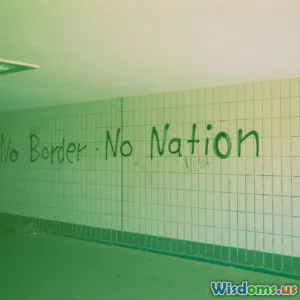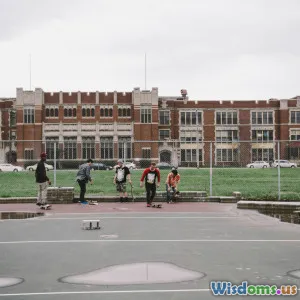
The Role of Art in Globalization
6 min read Discover how art transcends borders, shaping cultures and societies in the age of globalization. (0 Reviews)
The Role of Art in Globalization
Globalization, characterized by the interconnectedness of economies, cultures, and societies, has transformed the way we live and interact. At the heart of this transformation lies art—an essential medium that transcends borders and fosters communication among diverse cultures. This article delves into the multifaceted role of art in globalization, examining how it shapes cultural identities, drives economic growth, and promotes social change.
Art as a Medium of Cultural Exchange
Throughout history, art has served as a powerful vehicle for cultural exchange. From ancient trade routes that brought Eastern and Western art forms together to the contemporary global art fairs that showcase artists from every corner of the globe, art facilitates dialogue and understanding between different cultures.
For example, the Silk Road not only enabled the exchange of goods but also facilitated the sharing of artistic styles and techniques. This cultural intermingling is evident in the fusion of Persian miniatures with Chinese brushwork, creating unique art forms that reflect a blend of traditions. Today, similar exchanges occur in global art markets, where artists and collectors from various backgrounds come together, enriching the global cultural landscape.
Shaping Identity in a Globalized World
In an increasingly globalized society, individuals often grapple with the complexities of cultural identity. Art plays a critical role in this process, allowing people to express their heritage while engaging with global narratives. Artists often draw on their cultural backgrounds to create works that resonate with both local and international audiences.
For instance, contemporary artists like Yayoi Kusama from Japan and Ai Weiwei from China incorporate their cultural histories into their art, addressing broader themes of identity, politics, and social justice. Through their work, they initiate conversations about national identity and the role of culture in an interconnected world, challenging viewers to reconsider their perceptions of cultural belonging.
Economic Impact of Art in Globalization
The art market is a significant contributor to the global economy, with art sales reaching billions of dollars annually. Globalization has expanded the art market, creating new opportunities for artists and businesses alike. Art fairs, auctions, and online platforms have made it easier for artists to reach international audiences, thereby increasing their visibility and sales potential.
Moreover, the rise of cultural tourism has further strengthened the economic ties between art and globalization. Cities known for their vibrant art scenes, such as Paris, New York, and Berlin, attract millions of tourists each year, contributing to local economies. This phenomenon underscores the importance of art as not just a cultural artifact but also a driver of economic development.
Art as a Catalyst for Social Change
Art has the unique ability to inspire change and challenge societal norms. In the context of globalization, artists often use their work to address pressing social issues, such as inequality, climate change, and human rights. By engaging with these themes, artists can raise awareness and mobilize communities across borders.
A poignant example is the work of street artists like Banksy, whose politically charged murals comment on global issues such as war and poverty. Through their accessible and often provocative art, they encourage public discourse and inspire collective action, illustrating art's potential as a catalyst for social change.
Conclusion
As we navigate the complexities of globalization, the role of art becomes ever more significant. It acts as a bridge between cultures, fosters understanding, and drives economic growth while addressing social issues. By recognizing and supporting the diverse expressions of art in a global context, we can cultivate a more inclusive and harmonious society.
In conclusion, the interplay between art and globalization offers valuable insights into our shared humanity. It reminds us that while our cultures may differ, the language of art transcends barriers, fostering connections that enrich our global community.
Rate the Post
User Reviews
Popular Posts





















